Get PeakVisor App
Sign In
Search by GPS coordinates
- Latitude
- ° ' ''
- Longitude
- ° ' ''
- Units of Length

Yes
Cancel
Share ×

Scan the QR code and open PeakVisor on your phone
❤ Wishlist ×
Choose
Delete
Hutovo Blato Nature Park is heaven for those who love marshes and waterways. This park lies in Bosnia and Herzegovina, offering visitors fantastic views, numerous walking paths, and pristine wildlife. There are 14 mountains in Nature Park Hutovo Blato. Budisavina (583 m / 1,912 ft) is the highest point, and Crno Brdo (412 m / 1,351 ft) is the most prominent peak.
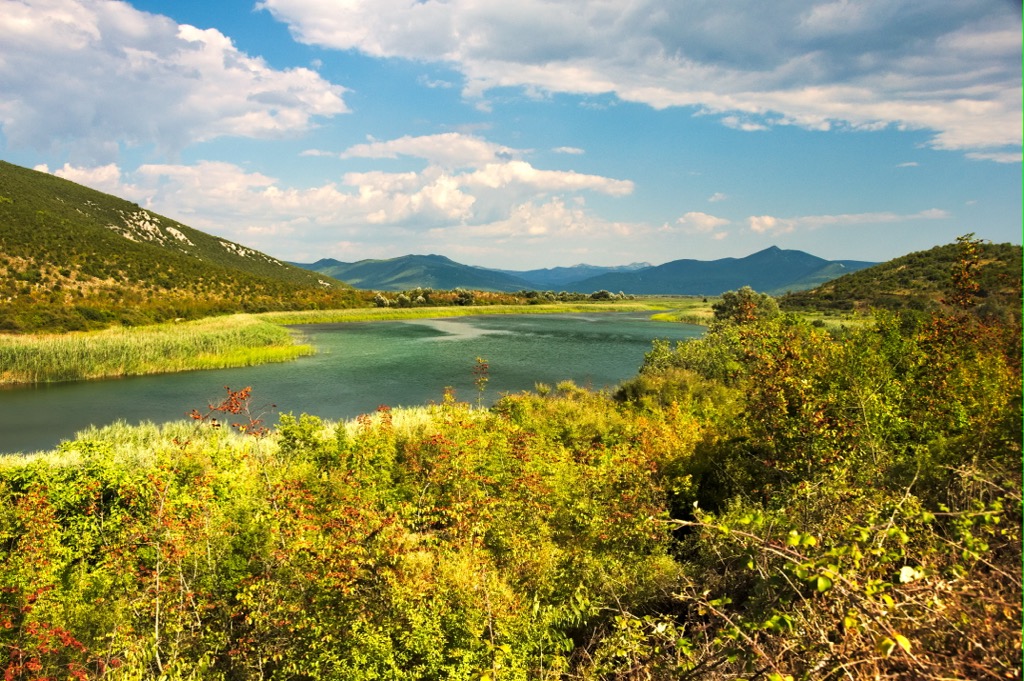
Hutovo Blato Nature Park is a bird-lovers paradise only 8 km (5 mi) away from Čapljina. Among the most important wetlands in Southeastern Europe, scientists and enthusiasts esteem the park for its ichthyological, archaeological, ornithological, and biological significance.
Out of 7,411 hectares (18,312 acres), 1,580 ha (3,904 ar) are water surface. Hutovo’s elevation varies between sea level and 432 m (1,067 ft). The park also boasts 61 springs and six lakes (Jelim, Deransko, Drijen, Orah, Škrka, and Svitavaz).
Canals and ravines interconnect these bodies of water with the Krupa River. The river plays a significant ecological role in the park and surrounding area, collecting and draining extra water into the larger Neretva river.
Considered to be internationally important, Hutovo Blato was added to the "List of Wetlands of International Importance" in 1971. The International Project for the Protection of Mediterranean Wetlands also incorporated the area in 1980. Because of its incomparable natural beauty, it was declared a Nature Park in 1995.
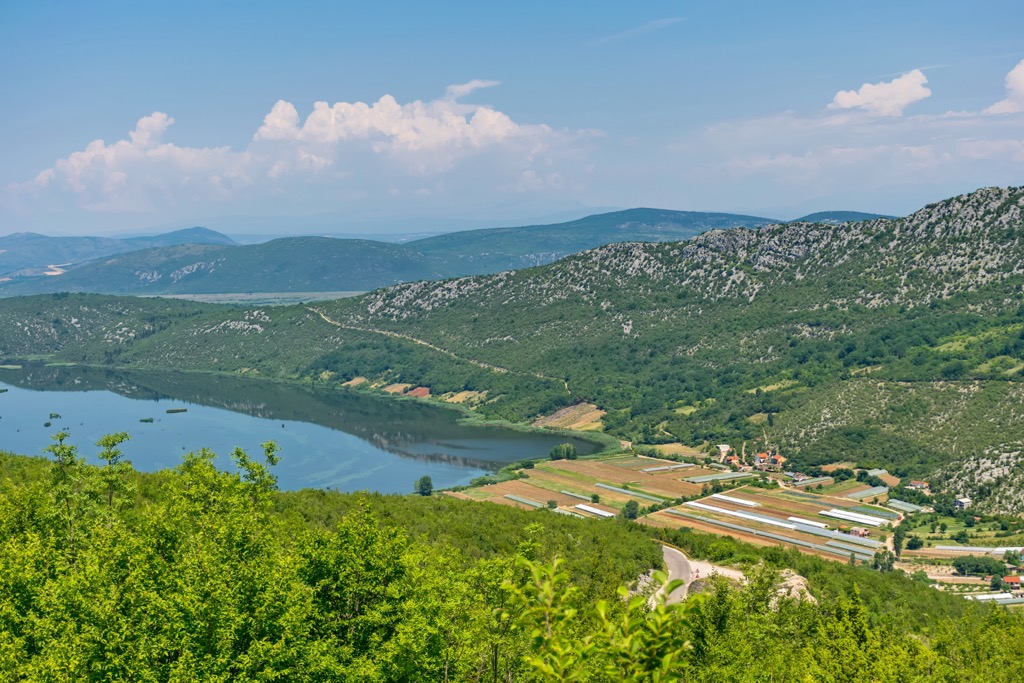
Amidst the picturesque landscape of Karaotok Hill lies the "Park" Hotel. The perfect getaway for holiday-seekers, the hotel provides comfortable accommodations, delicious cuisine, and various recreational activities like cycling, hiking, fishing, and educational tours. Tourists can opt for boat tours of the lakes and canals or canoe rentals for bird watching.
Inside Hutovo Blato Nature Park, numerous valleys and depressions result in a plethora of water bodies. Abundant precipitation builds up a high groundwater level, which is beneficial for creating karst sinkholes and forming wetlands and lakes.
Karst formations are unique landforms created by the dissolution of limestone or other soluble rocks. When groundwater dissolves this material beneath the Earth’s surface, layers collapse from above and produce a Karst sinkhole. Karstification is a complex process that involves chemical and physical weathering, erosion, and deposition.
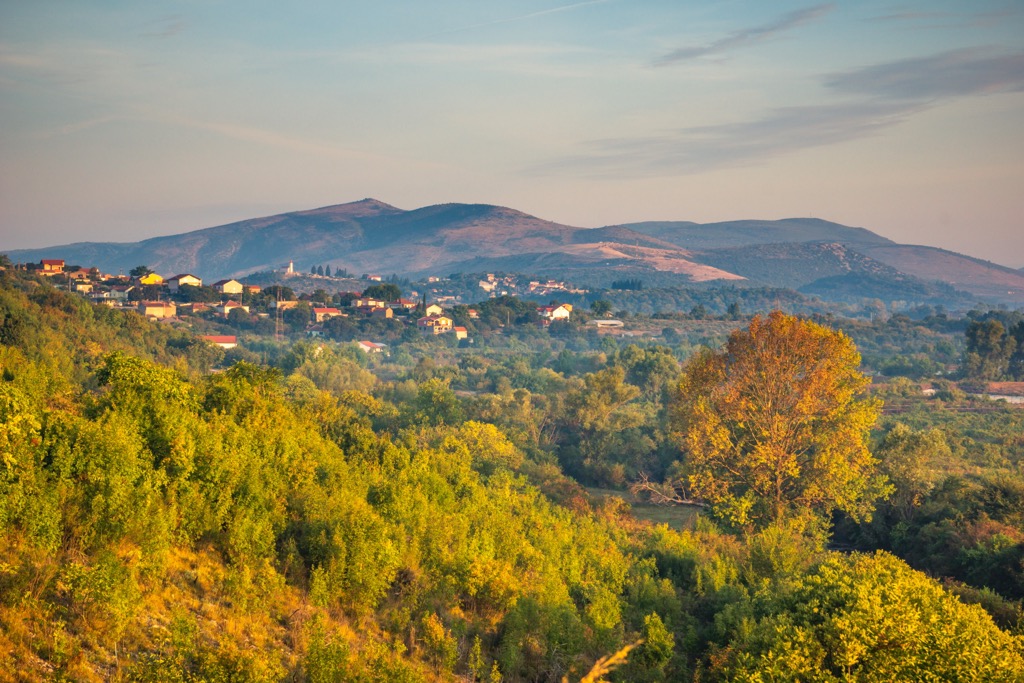
The result is an intricate network of caves, sinkholes, springs, and underground streams. Karstification can take thousands of years, but human activities such as mining and quarrying accelerate the process.
Hutovo Blato Lakes are genuine crypto-depressions, meaning their base is lower than sea level. However, Lake Svitavsko is an artificial reservoir constructed to supply a hydroelectric power station in Čapljina.
The key waterway in Hutovo is the 9 km (5.5 mi) long Krupa River that empties water from Gornjie Blato and Svitavsko Lake into the Neretva River. Its average depth stands at around five meters (16 ft).
The Krupa River also stands out by its unusual behavior of flowing both ways during certain seasons. This phenomenon occurs when high water levels and strong currents work together, allowing Krupa and the Neretva to join forces and push the Krupa’s flow upstream.
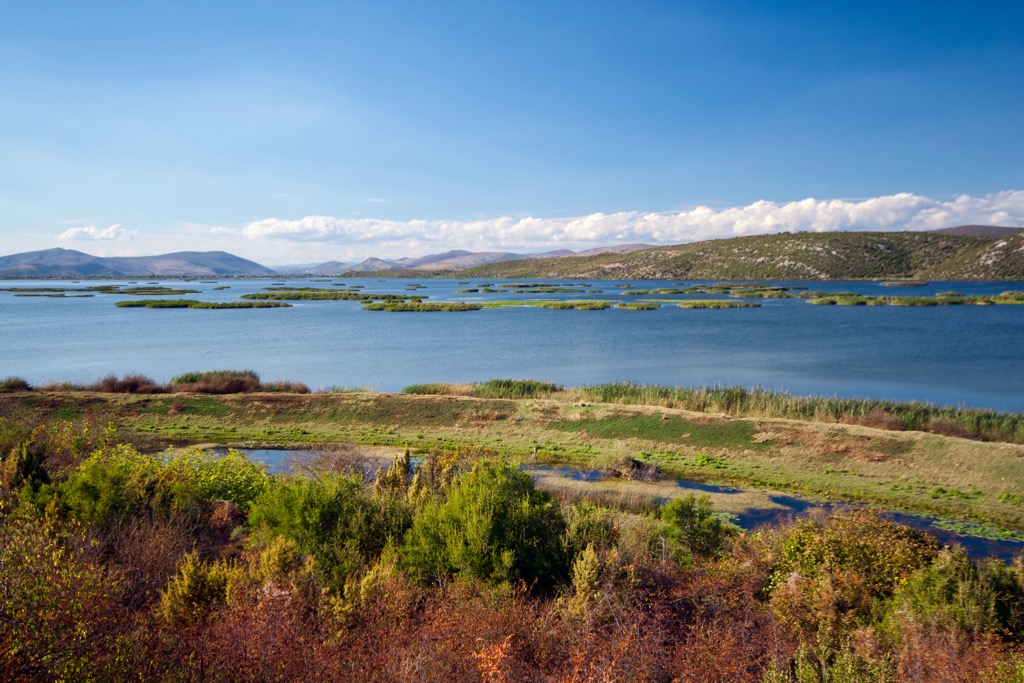
Hutovo Blato hosts a variety of stunning lakes (Jelim, Deransko, Drijen, Orah, Škrka, and Svitavaz). However, the park also has some peaks, including:
Hutovo Blato is close to the Adriatic Sea, so it enjoys the warm temperatures and pleasant weather associated with a Mediterranean climate. The distance from the park's center to the sea is only about 15 km (9 mi). The proximity to the Adriatic Sea and its water-rich landscape has yielded exceptional levels of biodiversity compared to the surrounding regions of Europe.
A remarkable sub-Mediterranean wetland, the Hutovo Blato showcases nature’s propensity for biodiversity. It is one of the most significant wintering grounds for birds in Europe. During the winter months, Hutovo Blato is home to more than 200 species of fowl. The abundance of freshwater fish, such as eel and carp, sustains the influx of birds. The park is situated along one of four migratory pathways connecting Europe with Asia and Africa, making it an essential stop for many species.
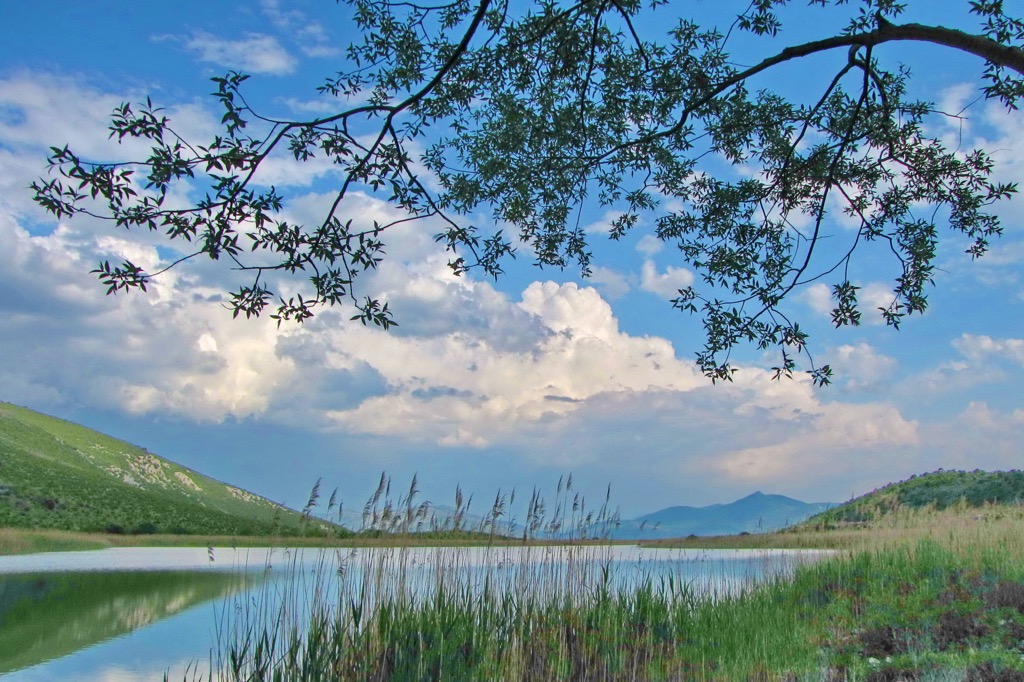
Hutovo Blato is renowned for bird watching. During the autumn and spring roosts, the number of species peaks. The latest research suggests 163 bird species from 39 families reside in the park, including herons, crows, wild ducks, egrets, vultures, owls, and others.
In 1998, Hutovo Blato was declared a globally significant habitat for birds. Subsequently, in 2001, the park became officially listed in the Ramsar Convention and registered with UNESCO. There are four main categories of vegetation in Hutovo Blato Nature Park: wetland, aquatic, meadow, and forest. An updated survey from the Life project identified over 600 unique species in the area.
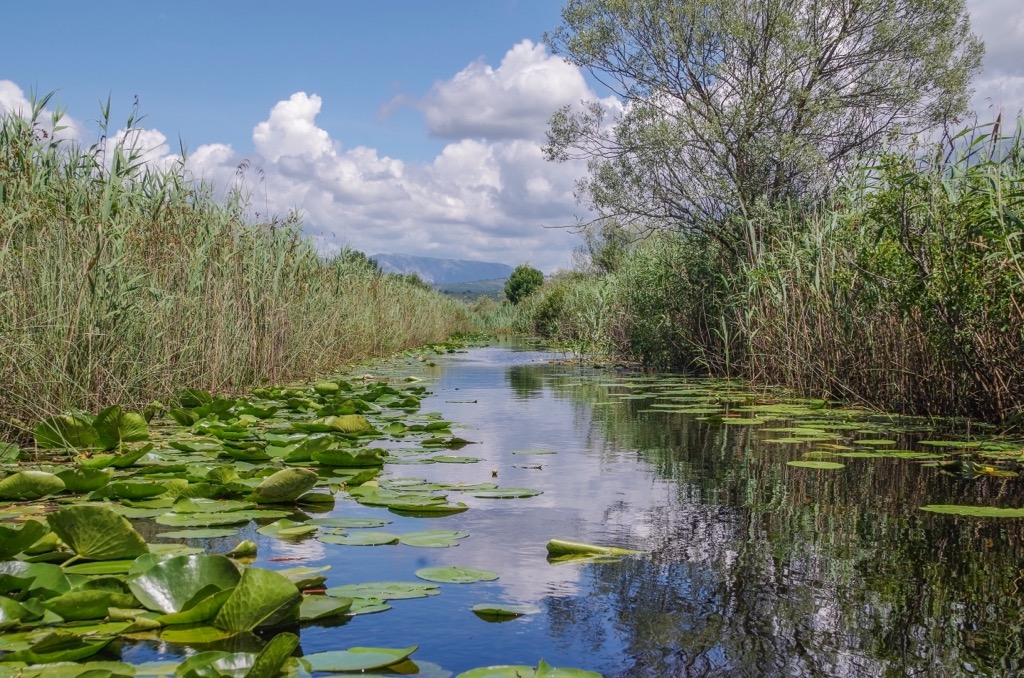
Water lilies and frogweed blanket the water surfaces and marshes. Sage and heather are the most common groundcover. Dryland contains a variety of plants that are indicative of forest and meadow habitats, contributing to its rich biodiversities, like ash, oak, pine, elm, alder, and others. Plant communities vary drastically in distribution; some are found only in localized areas, while others have large-scale coverage. The juxtaposition of vegetation and water produces a beautiful blend of colors and gives the landscape a unique charm.
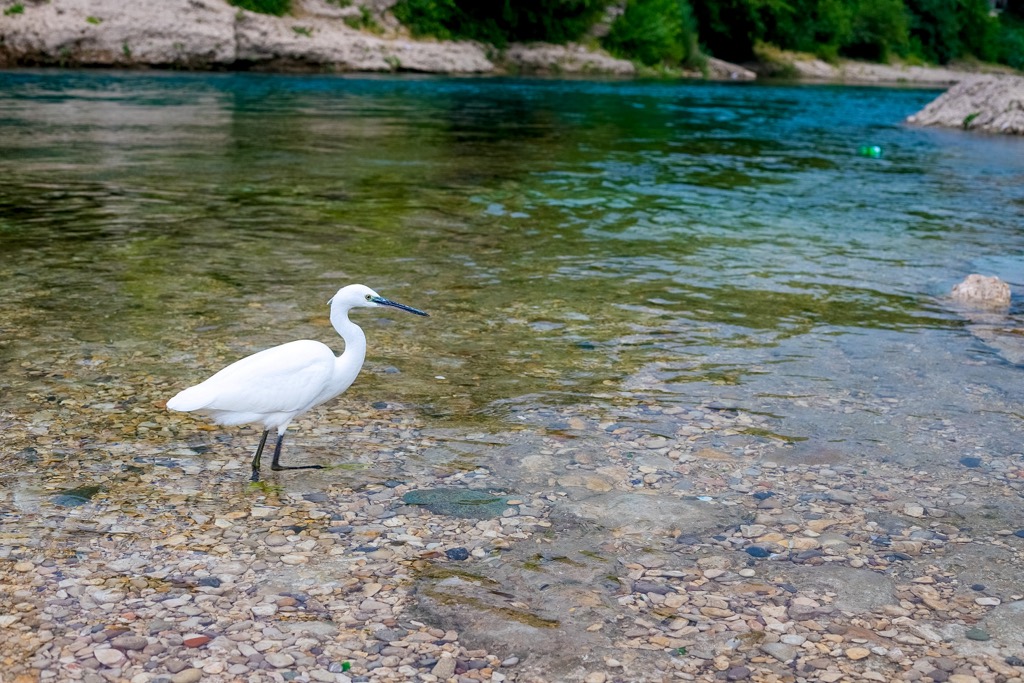
Historians have documented plenty of prehistoric activity within today’s Hutovo Blato Nature Park. The local Illyrian tribes Ardiei and Daorsi lived here during the iron age. Eventually, the Romans began trading in the region and built a small fort, settlement, and harbor on the bank of the Neretva River.
This ancient hub slowly evolved into an important economic center, importing and exporting materials and food to various ports throughout the Mediterranean. The local population of Illyrians had access to the sea and trading options. As was often the case, the Romans invaded, and the region became the province of Illyria.

Desilo is an ancient underwater archaeological site in Bosnia and Herzegovina near the Neretva River. Desilo is close to trading routes leading to the central city of Daorson and the Roman settlement of Narona.
In 2007, residents discovered several vessels at the bottom of Desilo Valley's lake. After conducting research and investigations, historians concluded these boats were Illyrian ships from the first and second centuries BCE.
Above Hutovo Blato lies Hutovo Fortress. The fortress and lakes were used together to fend off attacks, a strategy that lasted through the eighteenth century when the area came under Ottoman rule.
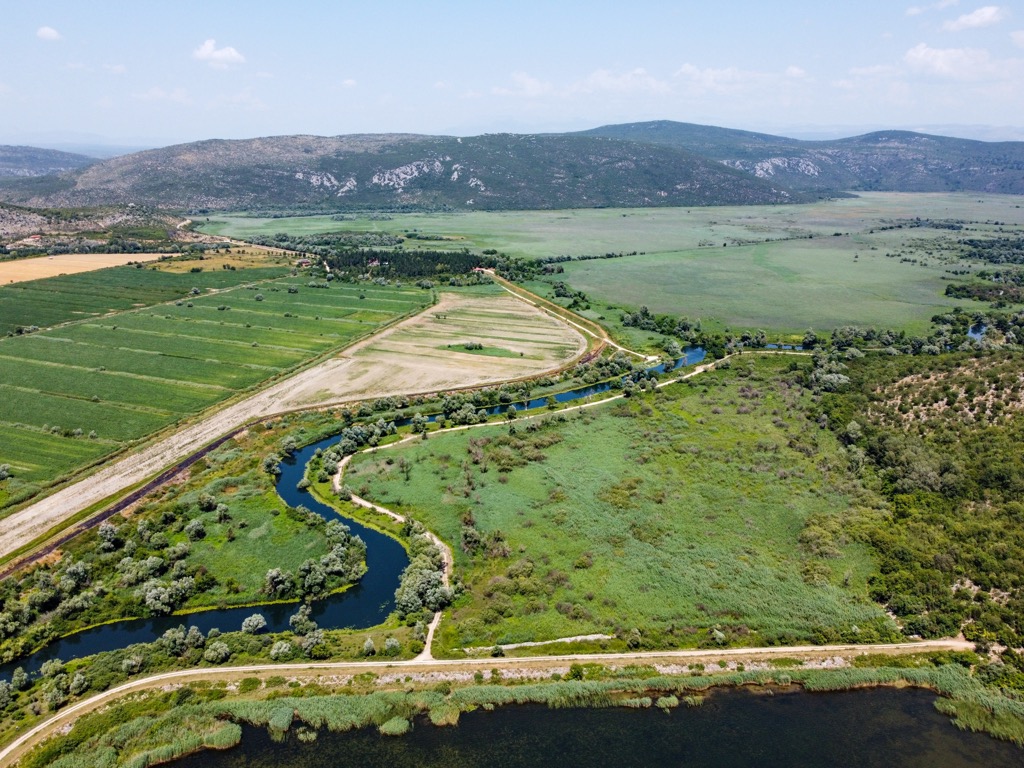
Following World War II, Hutovo Blato became a private hunting ground. On June 3rd, 1954, a wildlife reserve of 6,144 hectares (15,182 acres) was established to protect the region’s ecology.
However, birds and wildlife still needed to be fully protected under the law. In 1959, the Škrka Bird Reserve (350 hectares / 864 acres) was established as a part of the former reserve and declared off-limits for activities such as fishing and hunting that could be profitable but damaging to its ecosystem.
On 30th March 1995, the government granted Hutovo Blato the Nature Park status. In another landmark for conservation, the park was recognized internationally and included in the Ramsar Convention of 2001.
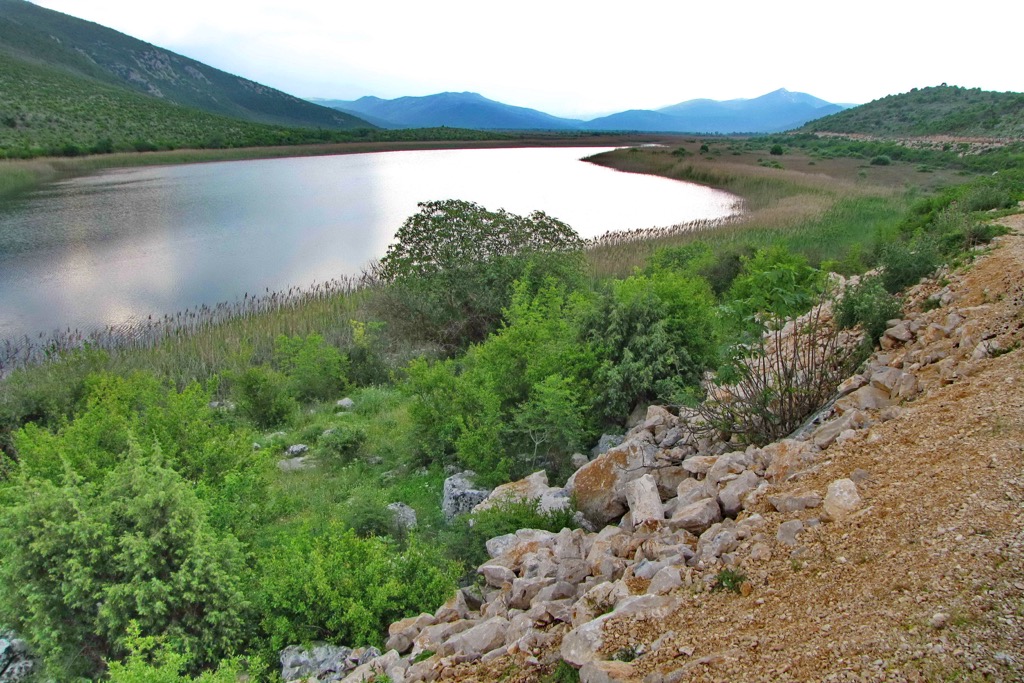
These are the best hikes to try while visiting this park:
This educational trail meanders around lakes. Beginning at the park’s entry at Karaotok and traversing around a small half-island, it’s the perfect outing for families. The trail takes around half an hour and offers several viewpoints.
Škrka is the most protected lake in Hutovo Blato and a great place to enjoy a hike or birdwatching session. You can reach Škrka Lake from the Karaotok park entrance in one hour.
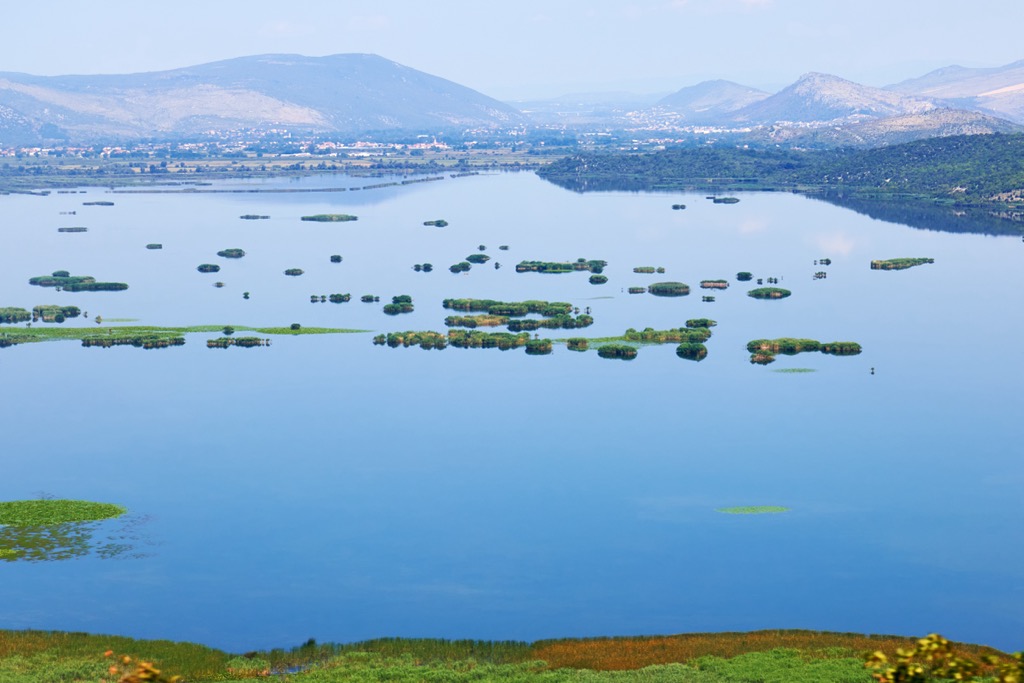
Consider taking the newly reconstructed regional road to Broćanac, a village near Neum. From there, you follow the marked path that leads uphill and passes through Mediterranean vegetation and rugged terrain until you reach Žaba.
As you ascend, you will pass a cave with a tall arch. The summit rewards you with a magnificent view of continental Herzegovina. You can observe Hutovo Blato Nature Park spread below. Zaba is an excellent destination throughout the year, though mid-summer can be uncomfortably hot.
These are the cities surrounding Hutovo Blato Nature Park:
Mostar is a city known for its rich history and culture. It is located in the south of the country and has a population of around 113,000. The city is renowned for its iconic Old Bridge, built in 1566 and considered one of the most beautiful bridges in Europe. Mostar also offers a variety of accommodation options ranging from traditional guesthouses to modern hotels.
Mostar is also home to some fantastic festivals throughout the year. The Mostar Summer Festival celebrates local music, while the International Jazz Festival showcases some of the best jazz musicians worldwide. There are also numerous cultural events, such as film screenings, art exhibitions, and theatre performances.
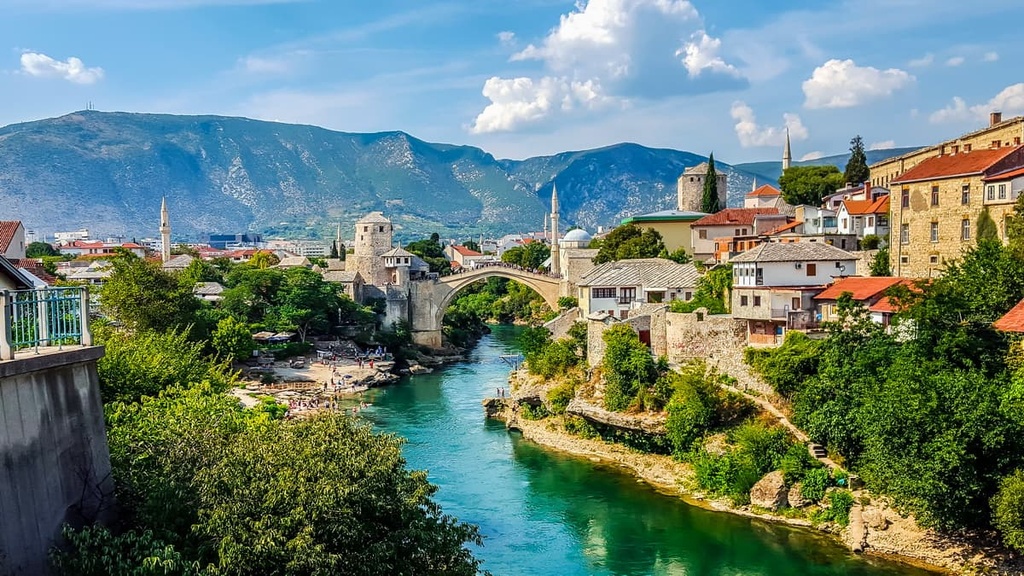
Čapljina is a small town on the banks of the Neretva River with around 28,000 people. The village has become a tourist hotspot known for its rich cultural heritage, stunning landscapes, and vibrant festivals.
Čapljina offers a variety of accommodation options, from luxury hotels to budget-friendly hostels. Restaurants offer traditional Bosnian cuisine and international dishes, and the town is home to several museums and galleries showcasing the region's history and culture.
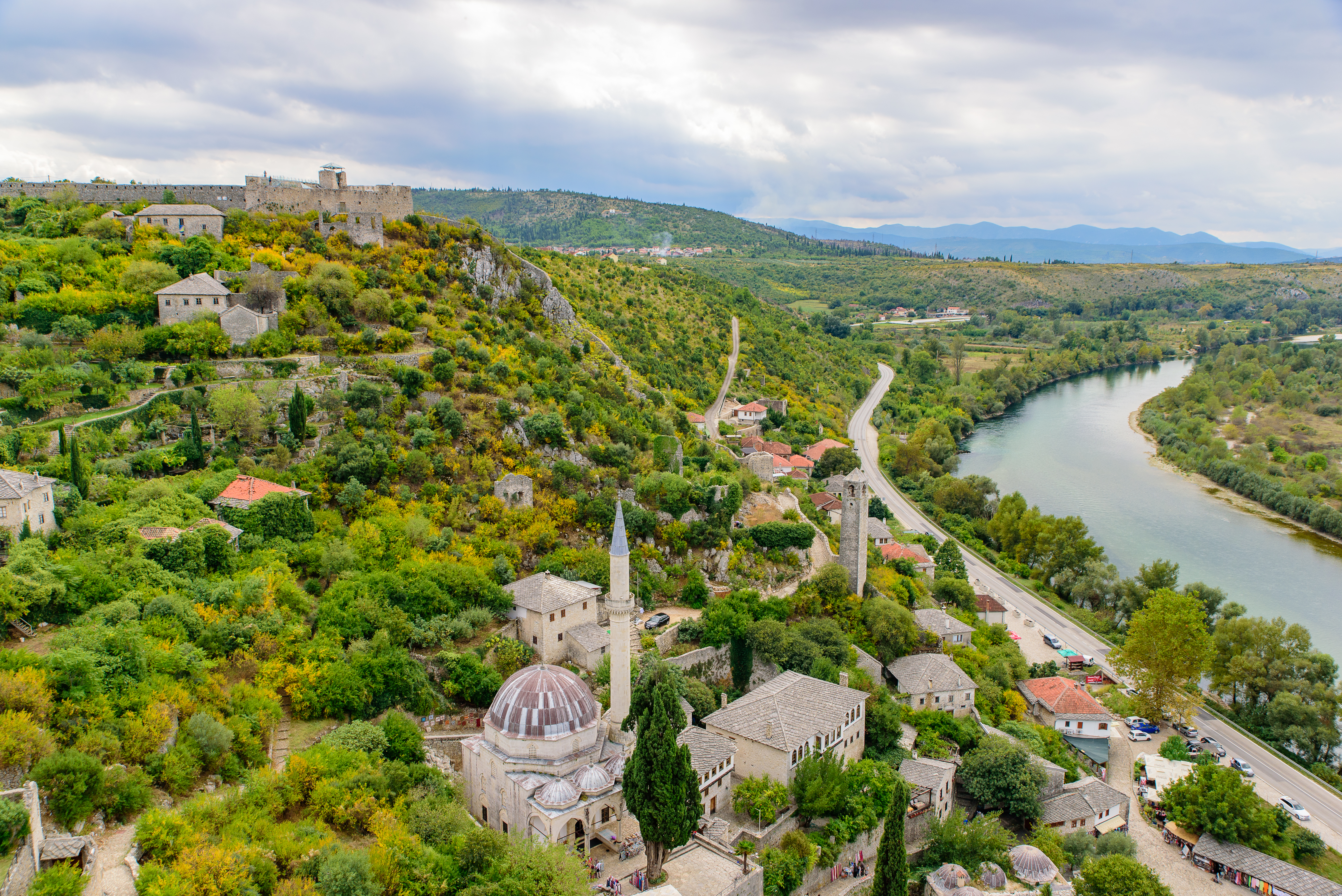
Stolacis a small town in the south of the country. The community is home to around 15,000 people and many historical sites, including the Stolac Fortress, which dates to the 15th century.
Stolac offers a variety of accommodation options ranging from hotels to guesthouses and apartments. The town also hosts several festivals, such as the Stolac Summer Festival, which celebrates local culture with music, dance performances, and traditional food. Visitors can enjoy outdoor activities like hiking or biking in nearby nature reserves or participate in cultural activities like museums and workshops.
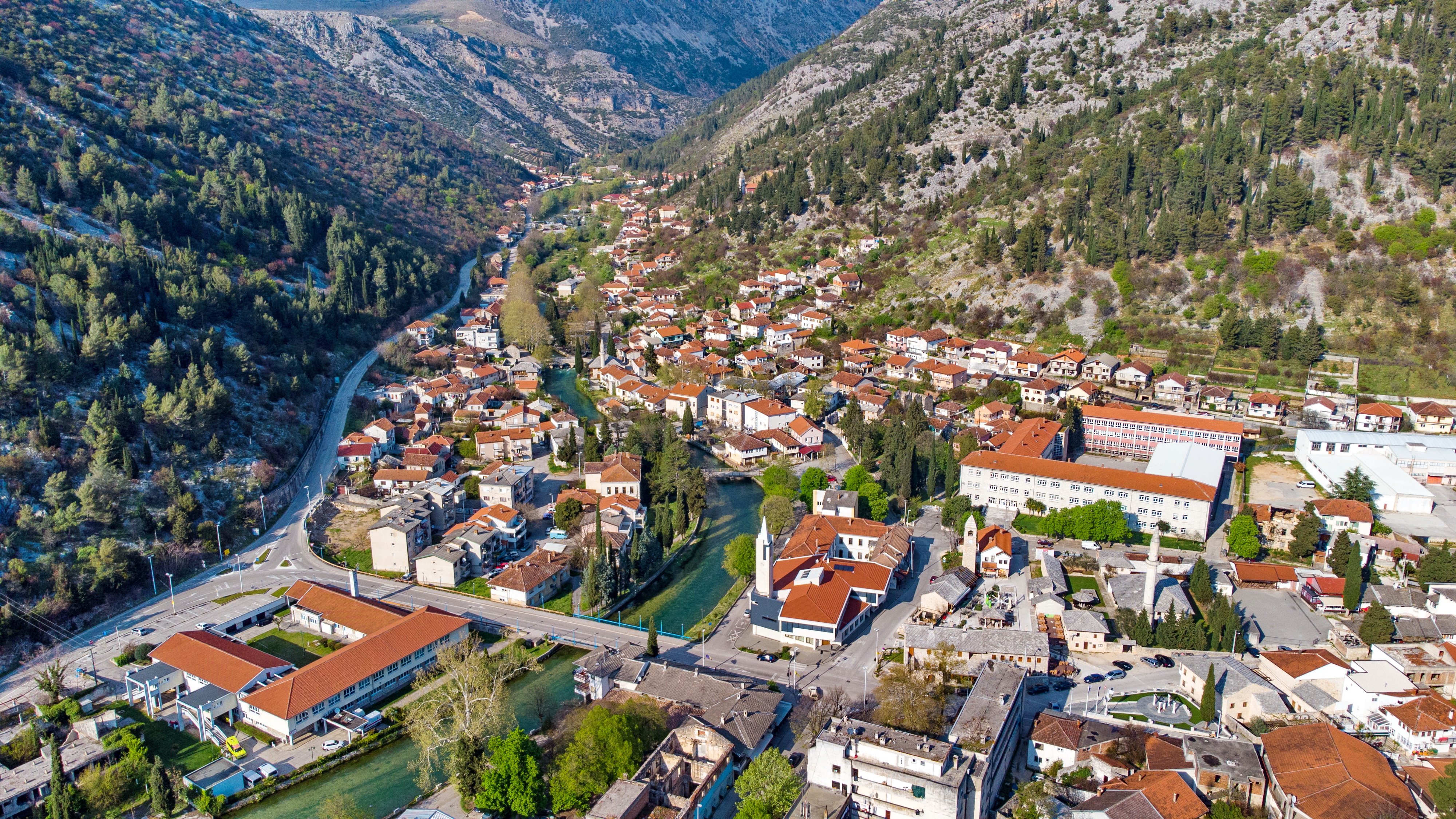
Explore Hutovo Blato Nature Park with the PeakVisor 3D Map and identify its summits.








